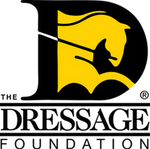Hilda Gurney: "Tempo, Rhythm, Forward"
Hilda Gurney has had an enormous impact in dressage in the US as a judge, rider, and breeder. She was a member of the Bronze Olympic Team in 1976, and has also earned individual gold, silver and three team gold medals at the Pan Am Games. Hilda has claimed six USET National Grand Prix Championships, and 15 USDF Horse of the Year titles. Additionally, Hilda has been a national eventing champion and a three-time USDF dressage competition breeder of the year.
Tempo is the key that opens up the magic of dressage. Dressage horses should dance with cadenced hoof beats. Tempo is the key to power. Dressage horses should spring lightly, energetically off the ground, maintaining a consistent tempo rather than quickening the beat of their gait. Dressage and music go together with the horse performing in time with the beat of the music. Tempo creates the ability for the horse to move through his whole body with expression.
Rhythm is the purity of the gaits. Correct sequence of the footfalls of the gaits is of utmost importance. Each stride of walk should be four evenly spaced beats. Any variation from this is penalized. Trot is a two-beat, diagonal gait with a distinct suspension period between each beat. Canter is a three-beat gait with a period of suspension within each stride.
All three gaits used in dressage may be shown in collected, medium and extended paces. Collected gaits are better balanced and uphill with increased power, engagement of the haunches and flexion of the joints. Collected gaits allow for increased lightening of the forehand and freedom of the shoulder, resulting in more expression being shown.
Medium and extended gaits should cover more ground in each stride without quickening the tempo. At the walk, extensions are simply done by lengthening the steps. At the medium and extended trots and canters, the suspension should be prolonged and more elevated, along with increased ground cover, and uphill balance. Ideally, all three variations of the paces; collected, medium and extended, are performed in the same tempo.
Forward: Dressage horses need to be very forward thinking, staying in front of their rider’s leg aids, moving into a steady but responsive contact. Forward is thinking of energy and power within the tempo of the gait- not quicker tempo.
Tempo is an important key in the development of the gaits and paces that make dressage the incredibly beautiful, artistic equestrian sport that enhances the horse’s natural beauty.
